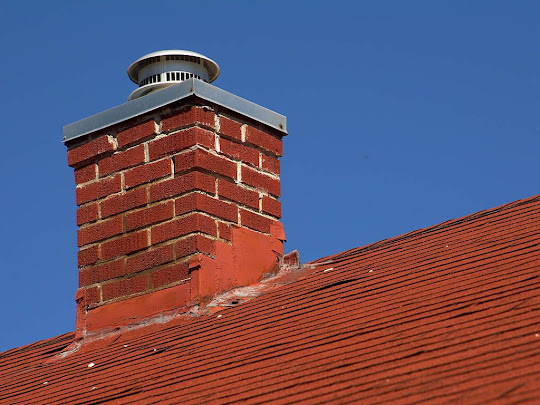How to Identify Chimney Stains?
Many homeowners are taking advantage of the sunshine during the warm weather. It’s the ideal time to do some landscaping, run through the drip irrigation, and dive into the pool. You might see that parts of the chimney have various coloured stains on them as you walk around the outside of your home. They include stains from a chimney. Although chimney stains can be unpleasant, if you know how to comprehend the colour of the stain, it may also be an indication of a serious problem.
What exactly is a Chimney stain?
To give you more information about this type of chimney issue, A Step in Time Chimney Sweeps lists some of the most Types of Chimney Stains and their causes.
Greenish-Dark Stains
It’s normal to find dark green staining on the chimney’s exterior. These dark green stains might additionally be seen on your roof. Though frequently misinterpreted for deterioration, these streak-like stains are the result of algae development. A professional inspection should be performed to accurately distinguish between soot markings and growing algae due to the stain’s rich colour. When there is a steady flow of water available for the algae to feed on, the algae proliferate. This could happen when there isn’t an overhang on the chimney crown, water has found a place to gather and pool, or there is a spot on the chimney where water runoff is likely to occur.
White Shades on Chimneys
Efflorescence is the term used to describe the method by which water-soluble salts discovered in masonry have come together with water, migrated to the outside of the bricks, and produced deposits that discolour fireplaces. The crystal or powdery white staining is safe and readily removed, but it indicates that the brickwork has been damaged. The issue with water in the masonry is that it expands and contracts over the winter’s freezing and thawing cycles. The method weakens the brick over time. Under the chimney stack, homeowners could find a pile of debris that appears to be the brick face coming off.
Brown Discolorations
Creosote is usually the cause of the brown stains that have begun to appear on the chimney. A natural byproduct of combustion is creosote. The substance may adhere to the chimney cap and chimney walls as it is released from the flue. The look of black or brown stains on the fireplace or chimney is typically a sign that the chimney is not being cleaned properly or frequently enough. Additionally, there is a good likelihood that there is a creosote deposit in the flue if there are creosote stains on the exterior masonry surface. Because creosote can catch fire, the most effective way to get it removed is by a chimney sweep as soon as possible.
Rusty or reddish stains
Rust is usually the source of any red or brownish stain. Your chimney’s metal components, such as the top and chase, rust with age. After that, water that has combined with the rust and ran down the side of your chimney leaves a rust stain on whatever it comes into contact with. To avoid chimney stains of this kind, it is suggested to replace the rusted parts. To stop that kind of stain from recurring, your Chimney Specialist like A Step in Time Chimney Sweeps can quickly install a new cap and flashing.
Black stains
There are several possible explanations if your chimney has black stains. The first possibility is that soot is what formed the black spots on your chimney. A buildup of black soot may result from not having your chimney cleaned regularly. It’s reasonable that the chimney sweep who cleaned your chimney the last time performed an unacceptable job or cleaned it improperly. If a fireplace is inadequately cleaned, it is not unusual to find soot marks on the interior of a house, particularly if the fireplace is open-hearth. The wood you burn contains an ingredient called creosote, which is responsible for the soot marks.
Possible Causes for Its Occurrence
The following are the most frequent causes of various stains that appear on chimneys and other buildings, such as walls, roofs, brick or stone, asphalt shingles, and, of course, fireplaces. They are algae Development, The coating of rust and Creosote, Corrosion, Mineral Salts, Paint, mildew and Soot Accumulation.

.jpg)

.jpg)
Comments
Post a Comment